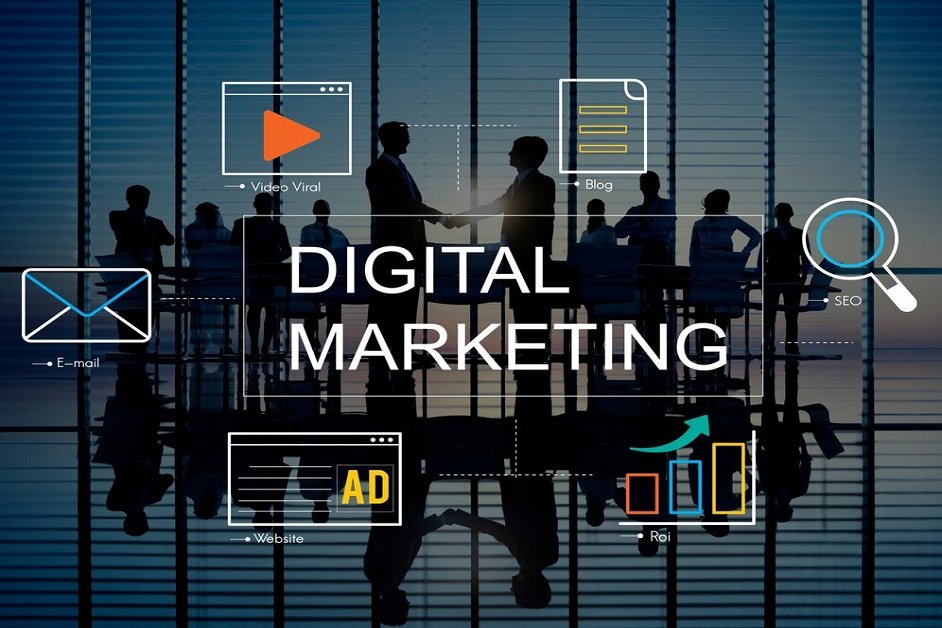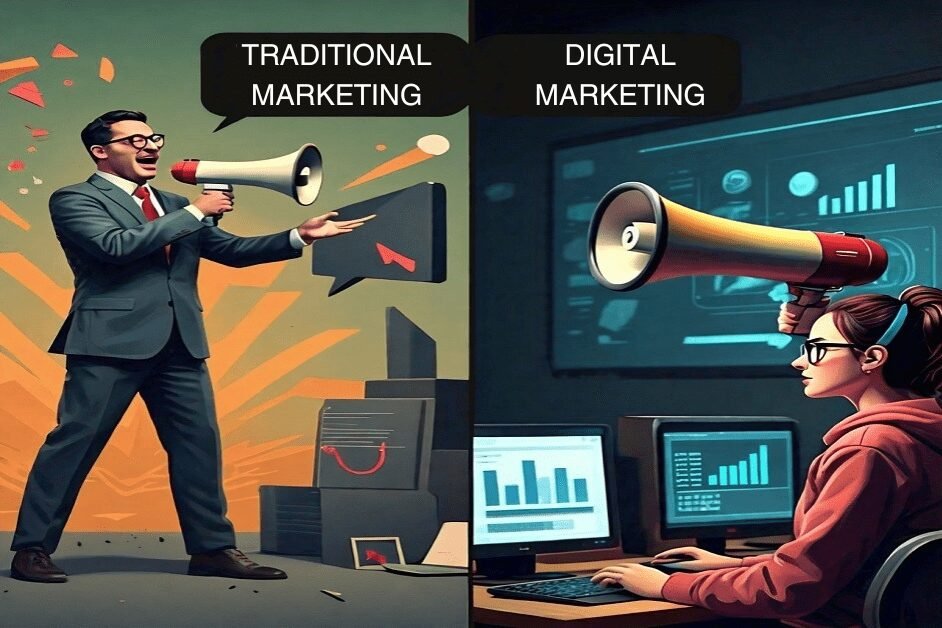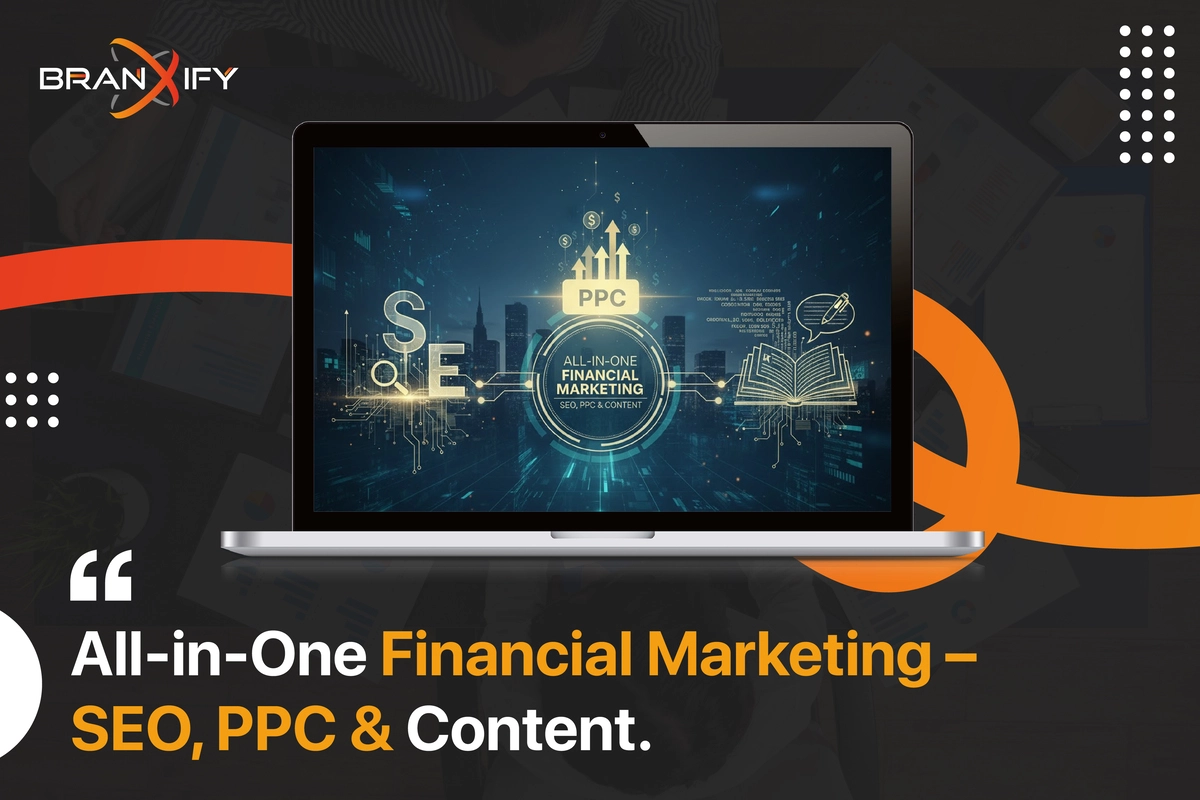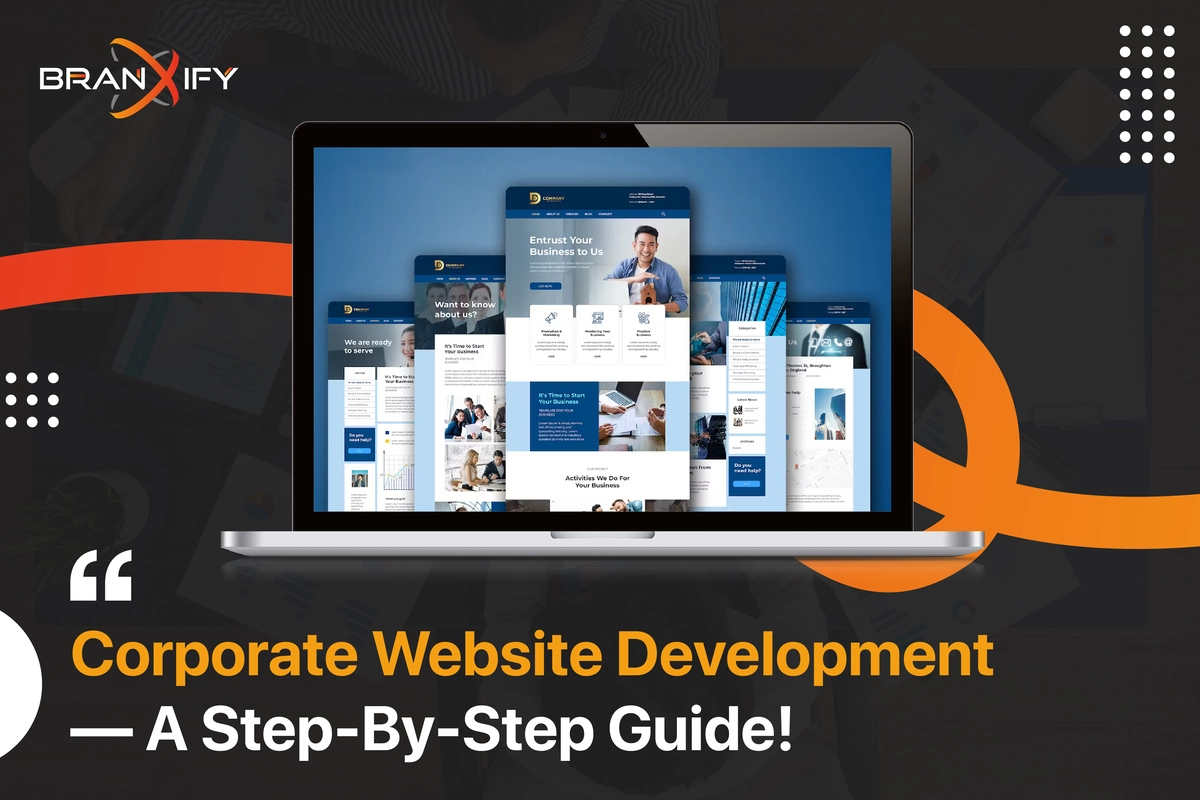In this digital world, marketing has experienced a substantial shift in recent years, with the advancement of digital channels and developed analytics reshaping how companies approach advertising.
In the ongoing debate of traditional marketing vs digital marketing, both approaches offer unique advantages. Traditional marketing excels at building broad brand recognition, while digital marketing focuses on measurable results and targeted campaigns. As businesses shift toward performance-driven strategies, understanding the strengths of each method is key to maximizing success.
We are going to explore the crucial and key differences between performance marketing and traditional marketing, in this article, and deliver insights into how each technique performs and their respective advantages and challenges.
Curious about how digital marketing can drive better results for your business? Whether you’re transitioning from traditional marketing or optimizing your current digital strategy, we can help.
Objectives:
Traditional Marketing:
Traditional marketing services mainly focuses on reaching a wider audience and creating brand awareness:
- Brand Building: Promote brand loyalty and build a recognizable brand identity.
- Wider Reach: To reach a broad audience, use channels such as print, TV, and radio.
- Public Awareness: Enhancing understanding and visibility of the brand among specific audiences.
Digital Marketing:
Performance marketing services typically focuses on achieving measurable and specific results:
- Immediate Response: Driving valuable actions such as leads, sales, or clicks that can be measured and tracked.
- ROI Optimization: Lies focus on maximizing ROI – return on investment – by spending for outcomes rather than impressions.
- Performance Metrics: Highlighting metrics like cost-per-click – CPC – cost-per-action – CPA – and return on ad spend – ROAS – to measure success.
Measurement:
Traditional Marketing:
Measuring the effectiveness of campaigns can be tough in traditional marketing. Traditional marketing frequently relies on indirect measurement which makes it challenging to attribute specific consequences to individual marketing actions:
- Impressions and Reach: Estimate the number of people who saw the advertisement.
- Brand Recall Surveys: Estimating whether customers remember the advertisement or brand.
- Sales Uplift: Examining changes in sales that may be attributed to the marketing measure.
Digital Marketing:
It is described by its focus on detailed measurement and accountability:
- Action-Based Metrics: Track actions such as conversions, clicks, or sign-ups instantly attributable to the marketing effort.
- Real-Time Performance Data: Assess real-time performance data to create rapid adjustments and optimizations.
- Attribute Models: Using attribution sophisticated models to to comprehend the consumer journey and issue credit to different touchpoints.

Structure of Cost:
Traditional Marketing:
It usually contains fixed expenses and upfront costs. The costs of traditional marketing are usually incurred regardless of the performance of the campaign which leads to probable inefficiencies:
- Ad Spend: Spend for placements of advertisement in print, radio, TV, or outdoor media, generally involves a flat fee or a negotiated rate.
- Innovative Costs: Invest in high-quality advertising production which includes video production, design, and copywriting.
- Duration of Campaign: Spending for advertisement exposure over a set period regardless of the authentic effectiveness or response.
Digital Marketing:
Performance marketing service cost structure assures that businesses only pay for measurable outcomes which makes it a more cost-effective strategy. It operates on a model of a cost-per-result which includes:
- CPC: At cost-per-click – CPC – it pays only when specific users click on the advertisement.
- CPA: At cost-per-action – CPA – it pays when an action is completed such as lead submission or purchase.
- CPM: At cost-per-impression – CPM – it pays based on the time the ad is displayed though this is less familiar in performance marketing.
Interested in leveraging the power of performance marketing for measurable results? Our team specializes in helping businesses optimize their digital marketing campaigns.
Targeting:
Traditional Marketing:
This type of marketing typically uses wider targeting approaches, usually resulting in a broader but less targeted audience reach, which includes:
- Demographic: This targeting method, allows to reach a wider audience based on general demographics such as gender, age, or location.
- Psychographic: In this method of targeting, enables targeting based on interests and lifestyle. However, this method is less accurate than digital methods.
- Geographic: This method of target center focuses on specific locations or regions through local media.
Performance Marketing:
The performance-based marketing type leverages advanced approaches of targeting and allows for highly personalized and relevant ad experiences, these methods include:
- Behavioral: This method allows to reach users based on their behavior such as past interaction and browsing history.
- Contextual: This method displays ads relevant to the content that is currently viewed by specific users.
- Retargeting: It allows to re-engaging of users who have, in the past, interacted with the brand without completing an aimed action.
Creative Flexibility:
Traditional Marketing:
This type of marketing usually involves making static, one-time campaigns with fixed creative elements which include:
- Production Time: Effective time and investment in creating creative assets such as print ads, billboards, or TV commercials.
- Fixed Messages: Innovative elements and messages are set in advance and generally remain unchanged during the campaign.
Performance Marketing:
This kind of marketing allows for more adaptable and engaged creative strategies:
- A/B Testing: Test various versions of advertisements to specify which works best and optimize-based results.
- Dynamic Creative: Adjusting the content of an advertisement in real-time based on user behavior and data.
- Quick Iteration: Rapidly making changes to creative elements to respond to market trends and performance data.
Channel Usage:
Traditional Marketing:
Traditional marketing utilizes various channels, which deliver wide reach but often lack precision, which include:
- Television: Broadcasting advertisements to a broad audience through TV networks.
- Radio: Connecting with listeners through audio ads on radio stations.
- Print: Utilizing brochures, newspapers, and magazines for ads.
- Outdoor: Using transit ads, posters, and billboards for visibility.
Digital Marketing:
This type of integrated digital marketing service usually uses digital channels, and delivers wider targeting, measurement, and interaction capabilities, such as:
- SEM: Search Engine Marketing – SEM – enables advertising on search engines with targeted keywords.
- Social Media Advertising: Social media marketing or advertising allows the promotion of content on various platforms, such as LinkedIn, Facebook, and Instagram, often managed by a Best Social Media Marketing Agency to ensure maximum engagement and results.
- Affiliate Marketing: Merge with affiliates to drive valuable leads or sales.
- Display Advertising: Utilizing banner advertisements and other display formats on apps and websites.
Data and Analytics:
Traditional Marketing:
In traditional marketing, the collection of data usually relies on:
- Market Analysis: Conduct studies and surveys to collect valuable insights into specific audience behavior and preferences.
- Sales Data: Exploring sales figures to measure the marketing efforts’ effectiveness.
Digital Marketing:
This type of marketing provides comprehensive capabilities of data and analytics:
- Real-Time Analytics: Access real-time data on the performance of the campaign which includes conversions, clicks, and cost metrics.
- Detailed Report: Develop detailed reports that deliver insights into different aspects of campaign performance.
- Data Integrate: Integrating data from various sources for a wide view of the effectiveness of marketing.
Transform your business with cutting-edge digital strategies that drive real results.
Conclusion:
The marketing types of performance and traditional have their stability and applications but in some areas, they differ in their goals, adaptability, targeting, measurements, and cost structures.
Performance marketing company highlights measurable outcomes, cost-effectiveness, and real-time optimization meanwhile traditional marketing company focuses only on wide reach and brand building.
You can easily make informed decisions about how to allocate your marketing resources and maximize your ROI -return on investment – by understanding these differences and allow us assist you in promoting your brand with our B2B marketing services and effective, affordable social media marketing.
Related Reading: What is Performance Marketing






